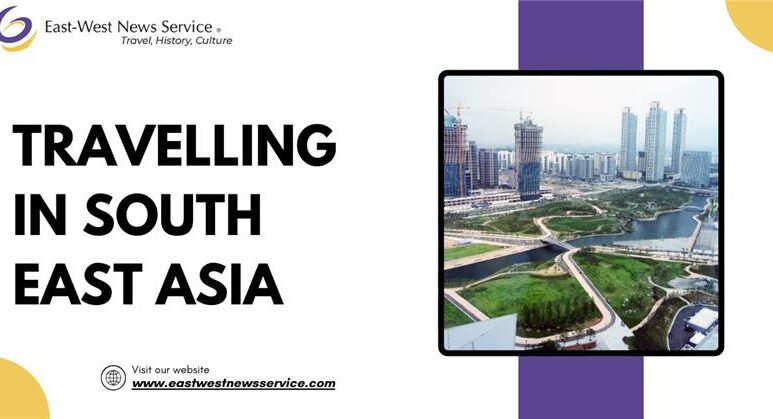When you talk about travelling in south east asia, what leaps forward in your mind? Golden temples at dawn, bustling street markets, dark verdant jungles, riotous festivals, open smiles. There is another layer, mainly through the stories beneath the stones, an echo of dynasty, colonial powers, ancient trade routes, and spiritual currents shaping the lives of many; at East West News Service, that is what must be believed.
A journey is best explained as an occasion in which you move along with history—not as a mere spectator but as an engaged wanderer. This post will be full of places in the Asia-Pacific region in which past and reality merge, thereby letting you take more than pictures—but make that entwined history yours.
1. Yangzhou’s Gates: A Portal into China’s History and Culture
Thus, it is found in the East West News Service: Yangzhou is a perfect portal that introduces you to China’s history, culture, and cuisine. Water bodies and gardens lie beside ancient gates and courtyards where poets and officials once held sway. Visiting the ancient district of Yangzhou, you walk upon the footsteps of sages, traders, and gardeners from time immemorial. Scintillating conversations about localization and memories are initiated when you walk through the alleys, sometimes dining on traditional foods, at Geyuan Garden, while local high school students act out ancient rites. The usual traveling in Southeast Asia often highlights tropical beaches or islands, while places like Yangzhou do shine with gems that illustrate why history does indeed attest in every piece of brick it throws off.
2. Temples, Sanctuaries, and Sacred Geography
Then there are elephant sanctuaries, say, up in the tropical hills between northern Thailand, a peaceful border amidst silent forests and hills. East West News Service goes on to explain that these spots are not just sanctuaries for displaced animals but regions thick with ritual. In the last century, the hill-tribe lifestyle has merged with the more urban Buddhist mode, interspersed with the older animist overtones as if all three belong here, for here exists time layered. If anything, people traipsing toward an ancient temple randomly find it silvery-lit amid shady greenery and historical chanting, thus deepening the affirmation of culture ever more rooted—so fittingly bound by historical rigors and in ultimate parenthood with Nature.
3. Beyond Angkor: Villages, Canals, and Rivers in Cambodia
It’s not an easy booking to work a safer passage to Angkor beyond a horde of tourists. Next, for the seasoned traveler, experiences provided by the East West News Service: Tonlé Sap and its grazing floating communities, crocodiles at night in the river, and rhythms of water-bound living. These are scapes where history is dynamic, breathing, shifting, and enduring. Local fishermen, high water levels, enclosed boats—they echo a tale of adaptation, survival, colonial influence, and ecological change. Drifting on, you don’t just look back, but you feel. Now history is part of the present.
4. Confluence of Cultures: Southeast Asian Cities on the Move
Likewise, cities of immense energy, such as Saigon (Ho Chi Minh City) and Macau, in Yunnan Province or in Bali, being crossroads of various worlds, have seen the likes of Chinese traders, European colonial powers, and conglomerated native groups. With the help of the East West News Service, instances would be visible in the architecture of Macau, for instance, or the svelte skyline of Saigon, where the French belle époque collides with Vietnamese grit and creativity. Here, including travel through history, style, food, language, and street layout, you name it—so much of it is woven of multistrands.
Conclusion
Traveling in time will add depth to your journey. Within it, you begin to see with a better understanding. You ponder why some traditions survive, why certain foods taste the way they do, and why these temple festivals have remained important. Be it ascending to Buddhist sites in the hinterland forests of Thailand, drifting down the waterways of Cambodia, understanding ancient Chinese architecture, or losing yourself in Southeast Asian metropolises dedicated to the finer things in life, such journeys forever remain implanted in your memory. East West News Service is telling us that the best journeys are the ones that honor within them the laps of time that let us walk on the pages of history. So the next time you plan a trip, make sure you stop at still-living epics and do not visit anywhere near a detachment.


